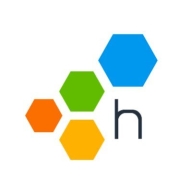

Splunk Enterprise Security and Honeycomb.io are competing in the cybersecurity domain. Splunk Enterprise Security frequently takes the lead with its data analysis and incident management capabilities.
Features: Splunk Enterprise Security's strengths lie in data ingestion, correlation, and alerting, supporting complex infrastructures with advanced visualization tools. Honeycomb.io offers real-time observability, high-level analytics, and effective debugging features. Splunk has strong SIEM capabilities, whereas Honeycomb provides efficient tracing and monitoring.
Ease of Deployment and Customer Service: Splunk Enterprise Security demands a comprehensive setup, often requiring significant resources, but offers varied support packages. Honeycomb.io's deployment benefits from cloud-native architectures, allowing quicker implementation and responsive service assistance, simplifying onboarding for agile organizations.
Pricing and ROI: Splunk Enterprise Security generally has a higher setup cost due to its extensive capabilities, delivering substantial ROI for enterprises needing comprehensive solutions. Honeycomb.io is a more cost-effective alternative with lower initial investment, providing high ROI through simplified pricing models that attract cost-conscious organizations.


Many offerings tout observability. How is Honeycomb different? We have defined what Observability is and have built a tool to help modern Dev, DevOps and Site Reliability Engineering teams operate more efficiently. Because it’s all about delivering high quality code, maintaining reliability and getting precious time back.
We made a critical decision to provide a seamless, current view of your system (from logs to events and traces) in a single data store, regardless of how complex your architecture is. This means you no longer have to toil with multiple tools or stitched-together solutions – burning time as you address issues affecting users.
We also believe strongly that optimizing systems and debugging should not be difficult and draining, freeing up more time to ship new code. Our approach emphasizes efficiency and knowledge sharing, thereby elevating everyone’s game and ultimately business outcomes.
Splunk Enterprise Security is widely used for security operations, including threat detection, incident response, and log monitoring. It centralizes log management, offers security analytics, and ensures compliance, enhancing the overall security posture of organizations.
Companies leverage Splunk Enterprise Security to monitor endpoints, networks, and users, detecting anomalies, brute force attacks, and unauthorized access. They use it for fraud detection, machine learning, and real-time alerts within their SOCs. The platform enhances visibility and correlates data from multiple sources to identify security threats efficiently. Key features include comprehensive dashboards, excellent reporting capabilities, robust log aggregation, and flexible data ingestion. Users appreciate its SIEM capabilities, threat intelligence, risk-based alerting, and correlation searches. Highly scalable and stable, it suits multi-cloud environments, reducing alert volumes and speeding up investigations.
What are the key features?Splunk Enterprise Security is implemented across industries like finance, healthcare, and retail. Financial institutions use it for fraud detection and compliance, while healthcare organizations leverage its capabilities to safeguard patient data. Retailers deploy it to protect customer information and ensure secure transactions.
We monitor all Application Performance Monitoring (APM) and Observability reviews to prevent fraudulent reviews and keep review quality high. We do not post reviews by company employees or direct competitors. We validate each review for authenticity via cross-reference with LinkedIn, and personal follow-up with the reviewer when necessary.